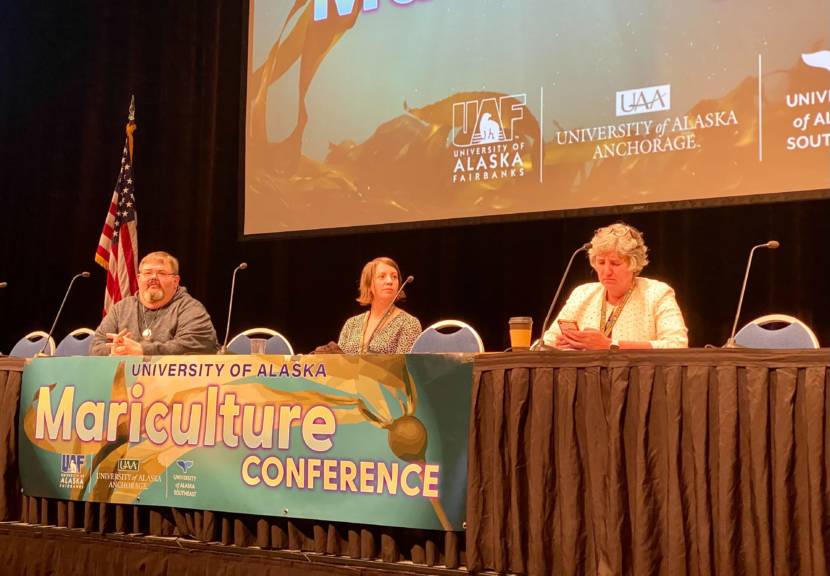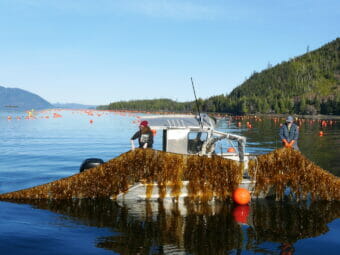
Supporters of mariculture in Alaska are working to build a $100 million industry out of shellfish and seaweed over the next two decades. They’re meeting up at the University of Alaska Mariculture Conference in Juneau this week to talk about how to get there.
The Juneau Economic Development Council is hosting the conference. Executive Director Brian Holst said mariculture is a good long term investment for the state.
“It is an industry that’s sustainable for Alaska, and can create jobs in not just in communities such as in places like Juneau, but in rural areas throughout Southeast. And anything that’s good for communities around Southeast Alaska is also good for Juneau,” he said.
The University of Alaska is sponsoring the 3-day event. President Pat Pitney said the university is “all in” on mariculture.
“Alaska needs to be on the world map for mariculture,” she said. “We have people who are better prepared and more willing to work for it. And that’s gonna get us there.”
The university is developing academic programs in mariculture for its undergraduates and now offers a master’s degree in marine policy, in a partnership between the University of Alaska Fairbanks and the University of Alaska Southeast.
Julie Decker directs the Alaska Fisheries Development Foundation, a non profit that supports fisheries. She says mariculture is a way to grow seafood opportunities in the state.
“This incredible, once in a lifetime opportunity has to be balanced with a sense of responsibility. The urgency needs to be balanced with equity. And so the real challenge that’s before us is figuring out how to do things better than we’ve done them in the past,” she said.
There’s $32 million in mariculture research over the next decade coming from the settlement from the Exxon Valdez oil spill. An additional $50 million could come from the federal government and $25 million could come in matching funds from the state.


